Kreighton Paints a Case Yellow Fallschirmjager Army
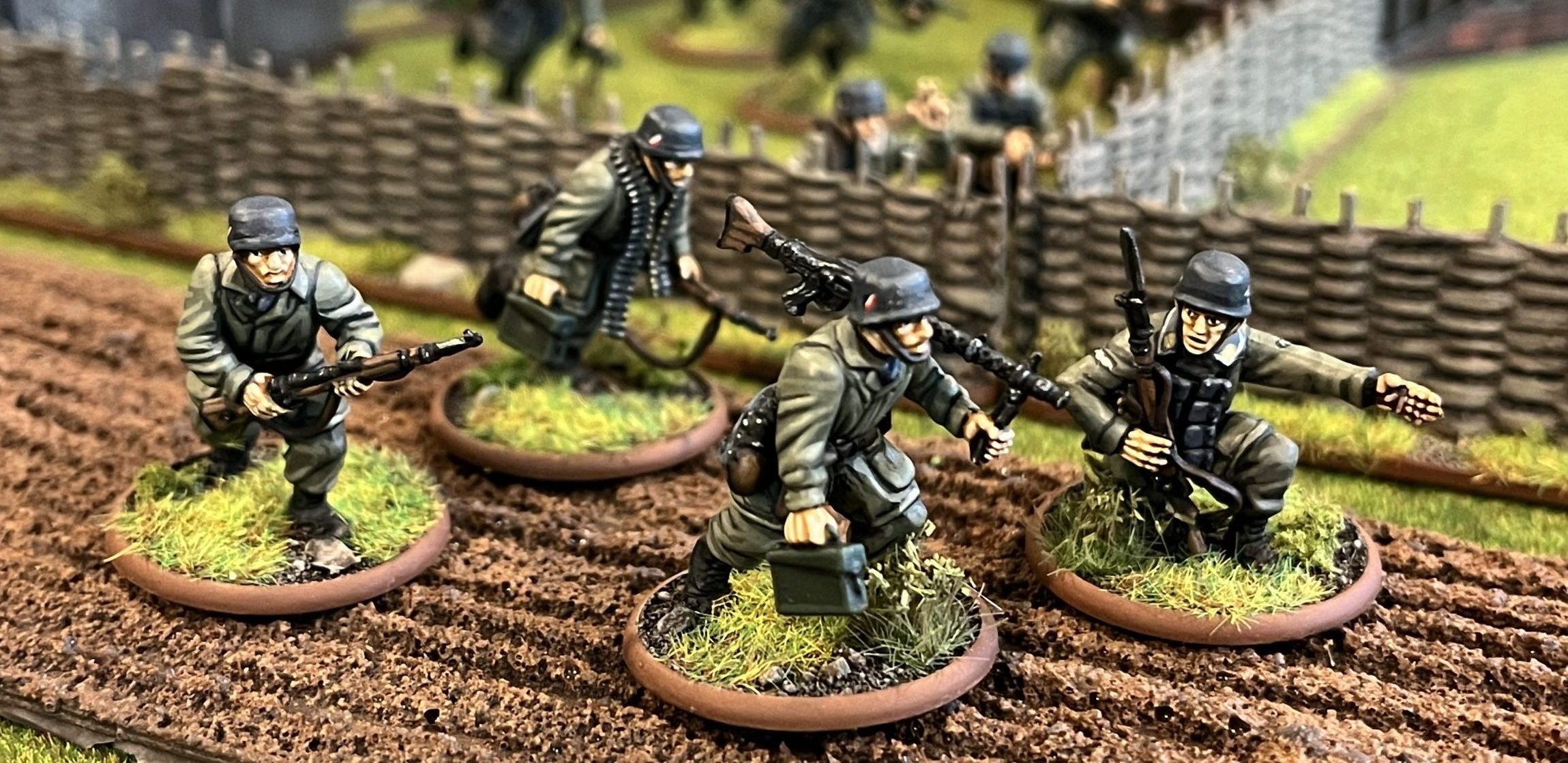
By Kreighton Long
During the Case Yellow period the Fallschirmjager typically wore a Luftwaffe blue-grey blouse and German Fieldgrey combat trousers. Over these was donned the green-grey step-in jump smock. The Fallschirmjager’s helmet was a modified stahlhelm with the brim removed to prevent sharp edges fraying the parachute lines and to reduce wind resistance that resulted in paratroopers with the stahlhelm being nearly strangled from their helmets lifting from their heads during their descent.
Removing the brim eliminated both these risks and created the iconic look that most veteran WWII wargamers can spot from a table away. Initially, the helmet was painted Luftwaffe blue-grey but was later painted green after early combat experience. Gloves and jump boots were black leather.
Webbing was typically black or dark brown leather. During the early-war period a Fallschirmjager would be issued a canvas gas mask container rather than the standard issue metal one in order to reduce the risk of injury during a drop. Therefore I made an attempt to remove metal gas mask containers during assembly where possible.
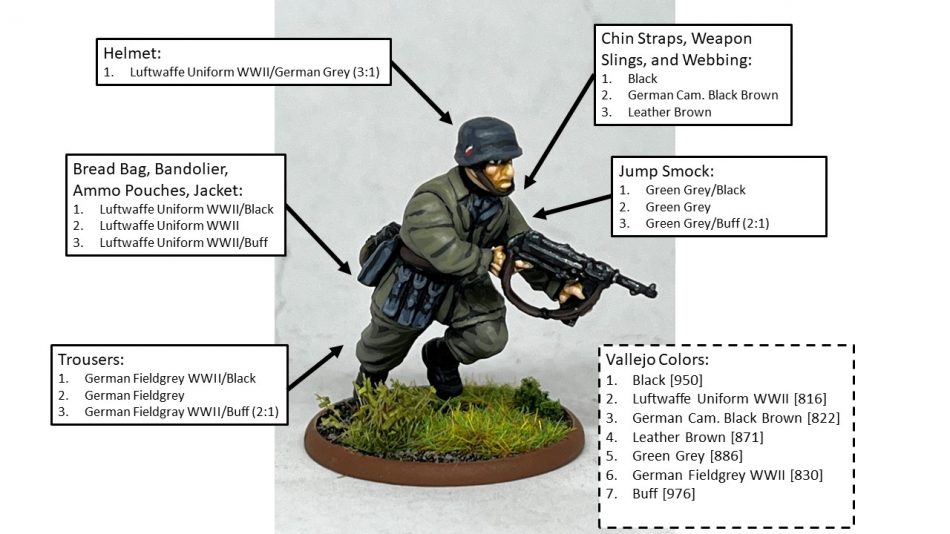
The early-war Fallschirmjager helmet included two details that did not last the war. On the right side of the helmet was a shield with the German tricolors and on the left side was the Luftwaffe (German Air Force) eagle.
Combat experience early in the war led the Fallschirmjagers to remove both the tricolors and the eagle from their helmets. Photographs taken of Fallschirmjager in May 1940 show both the tricolor and eagle so I decided to include them on my own pieces.
For painting the tricolor I used Vallejo’s Off White [820], Red [947], Black [950], Luftwaffe Uniform WWII [816], and German Grey [995].
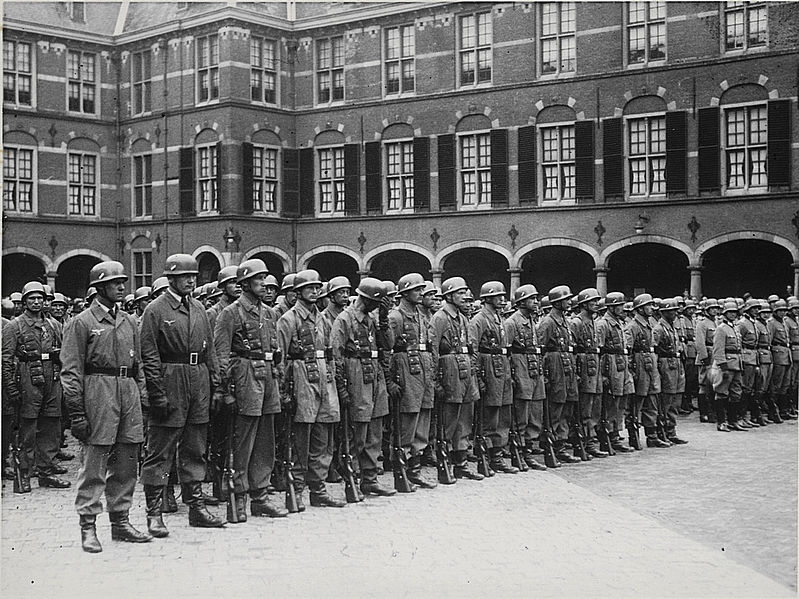
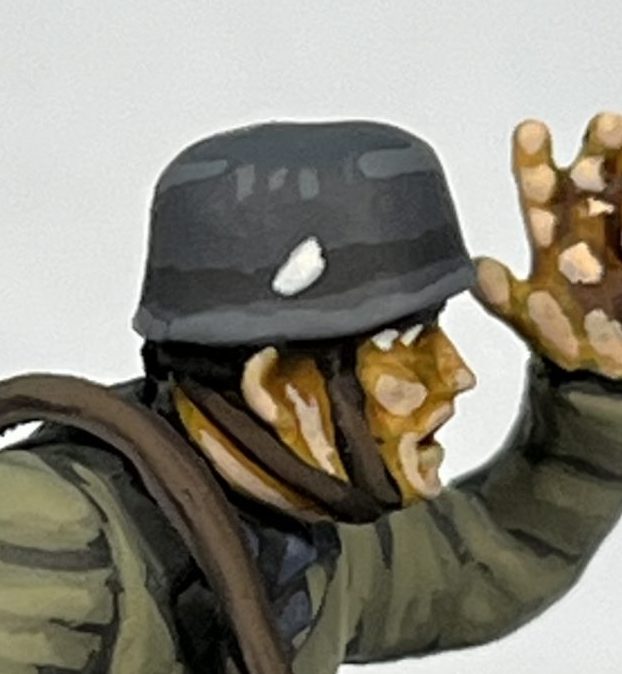
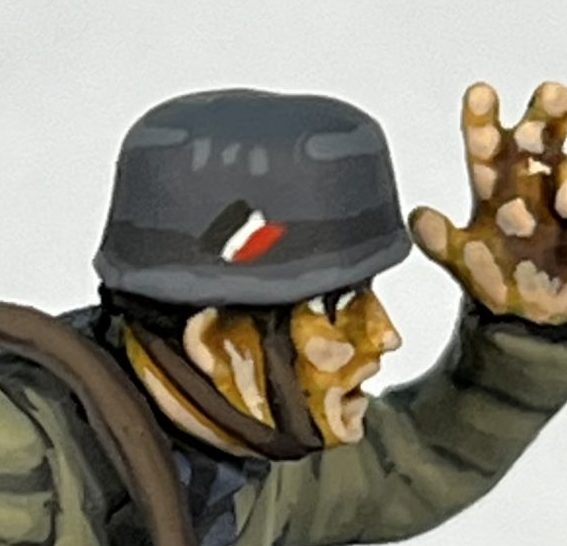

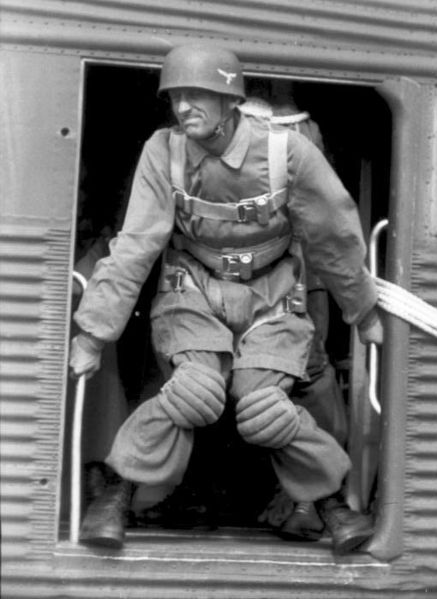
For the helmet eagle I used Vallejo’s Silver Grey [883].


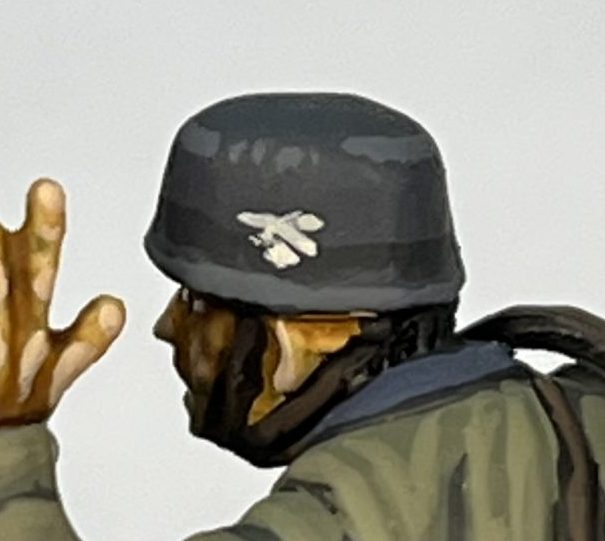
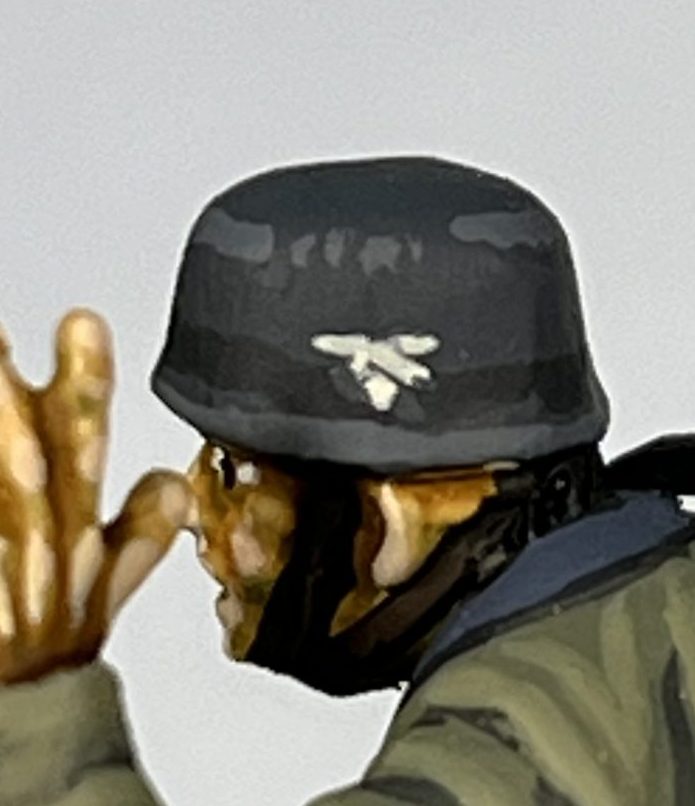
Because hand painting the helmet details wasn’t enough I also tried my hand at painting the rank insignia for my NCOs and Officers. NCOs and Officers wore rank insignia on both their upper arms and their collars. For sleeve insignia — the wings were silver with a black background for NCOs and Company and Field Grade Officers. Flag Officers wore gold on black. I painted my sleeve insignias with Vallejo’s German Grey [995] and Silver Grey [883] and cleaned up the edges with the Green Grey [886] smock color.

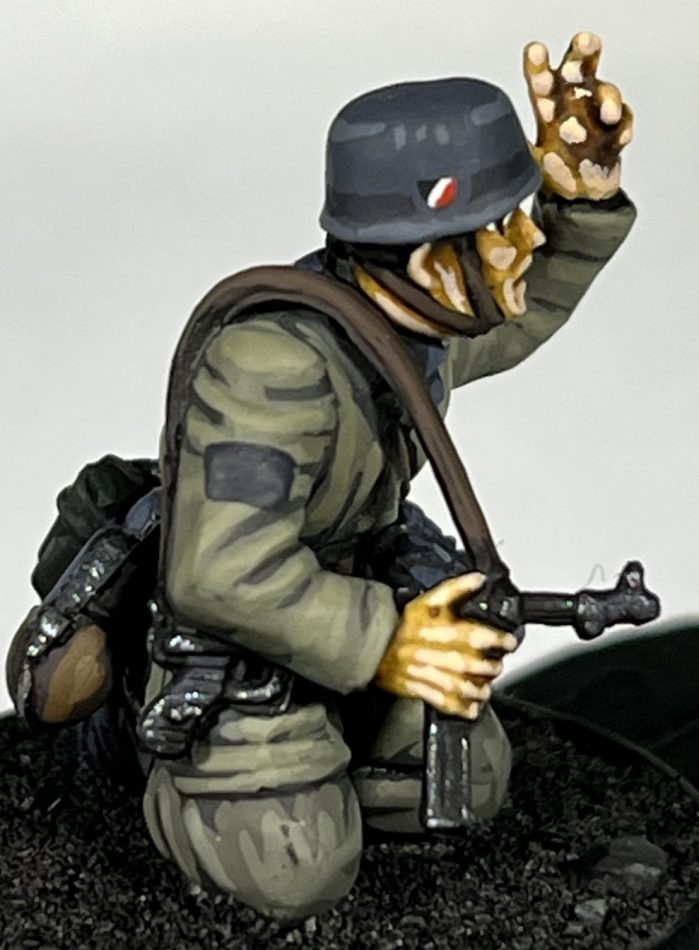
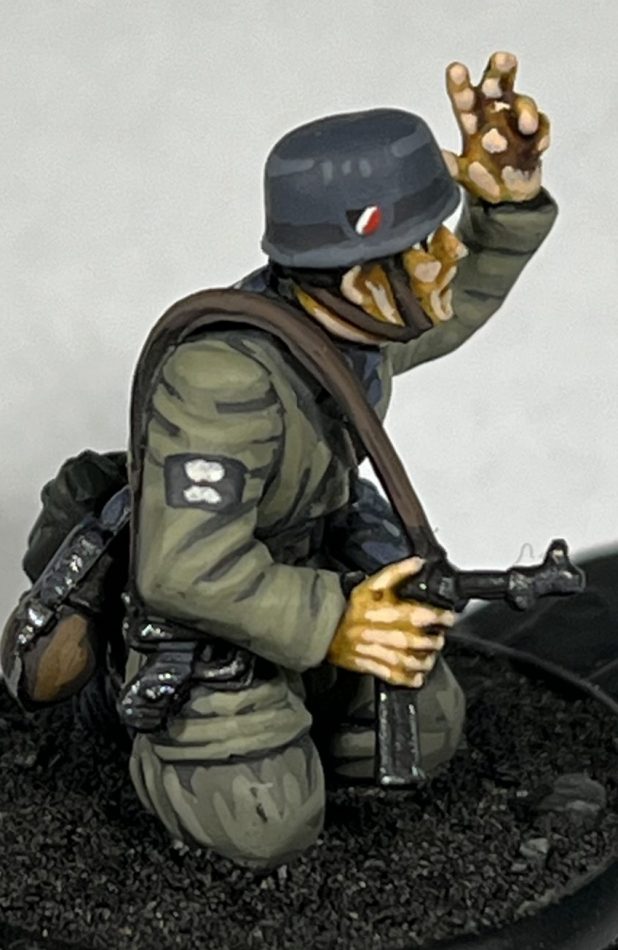
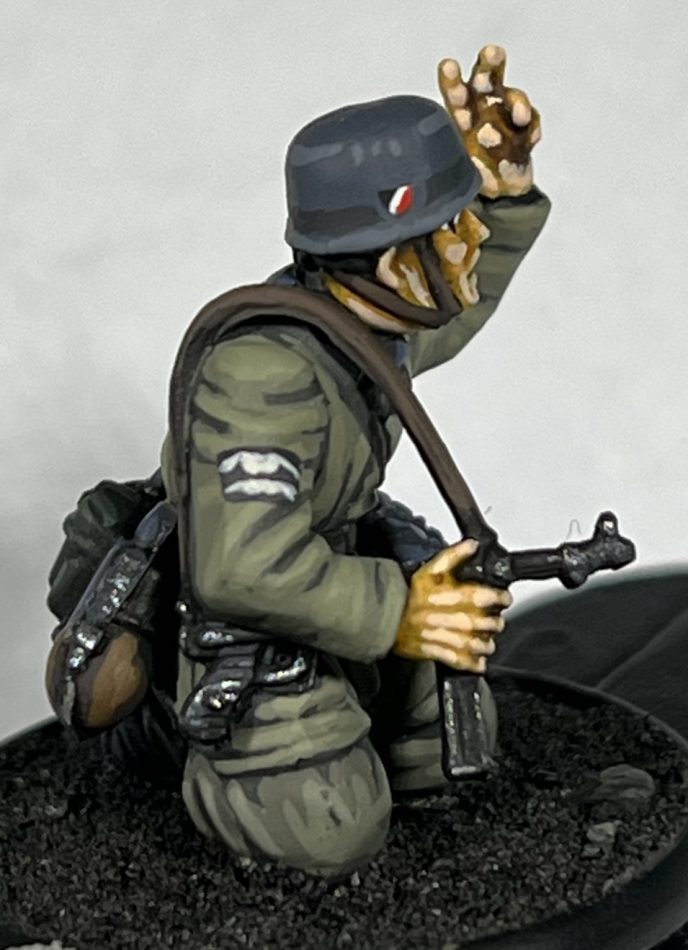
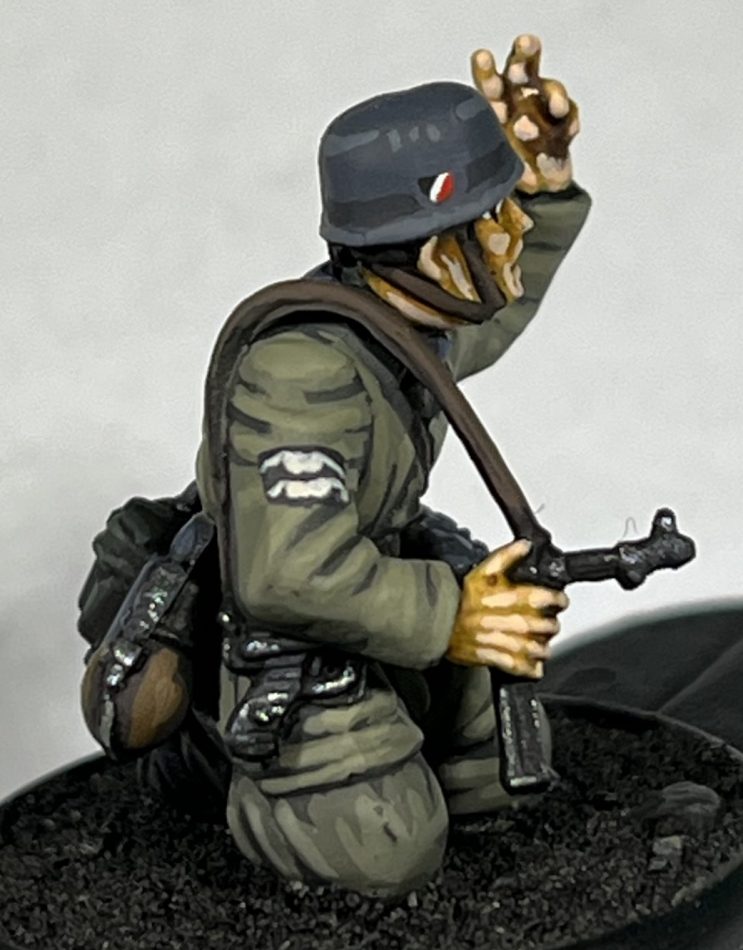
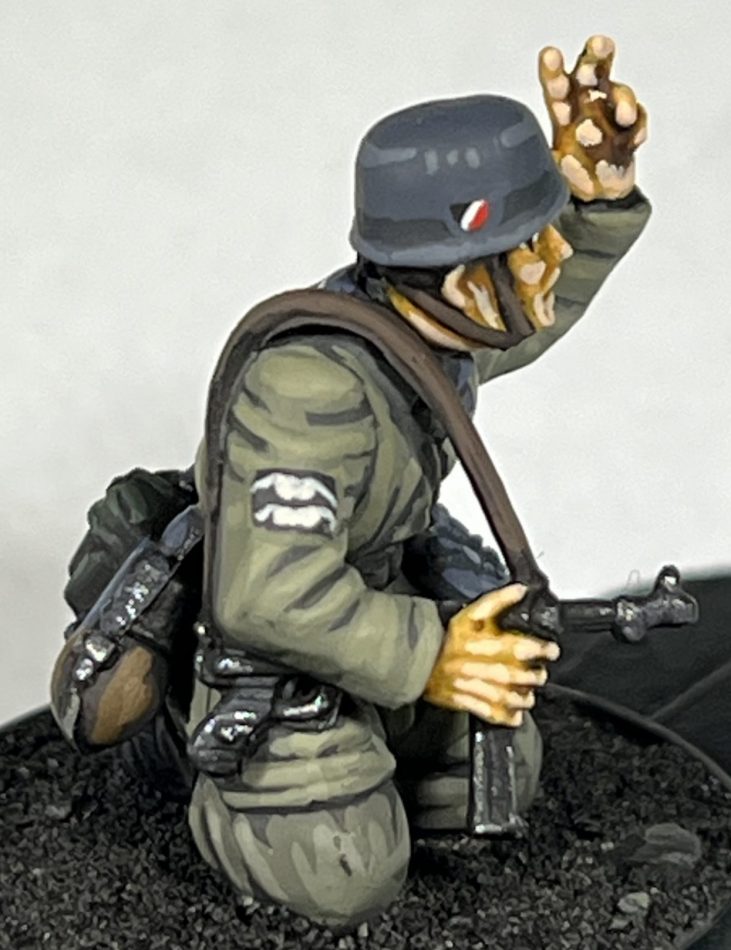
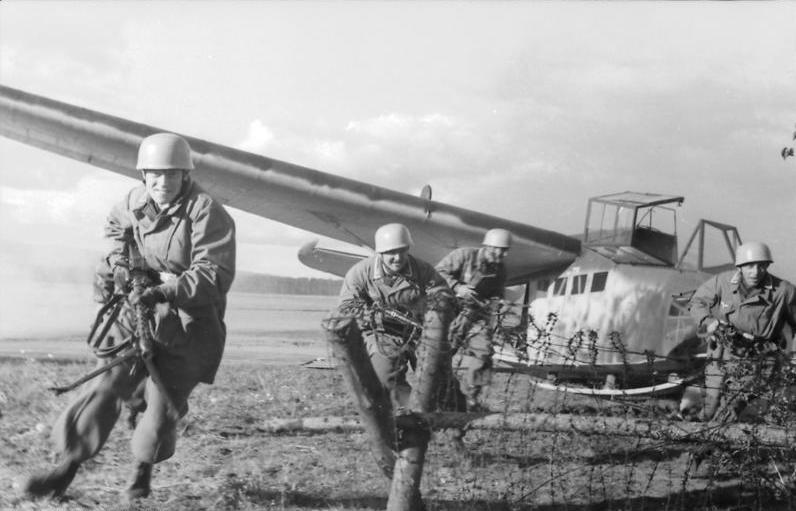
Like their Heer counterparts, Fallschirmjager also wore their ranks on their collars. Collar tabs were a yellow square under the same insignia as their arms insignias. At 28mm I wanted to capture the splash of yellow color and attempted the wings though I believe few others will notice.
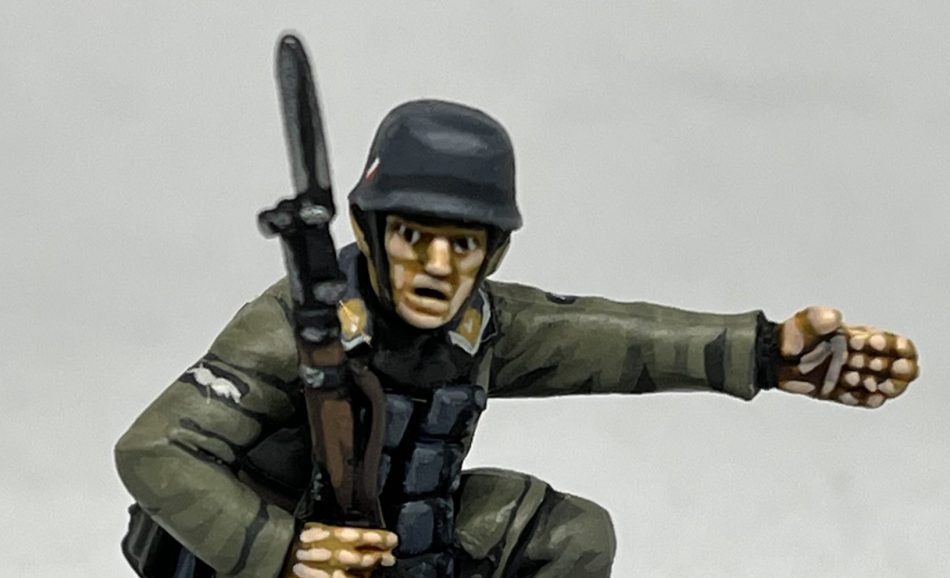
Happy painting!
